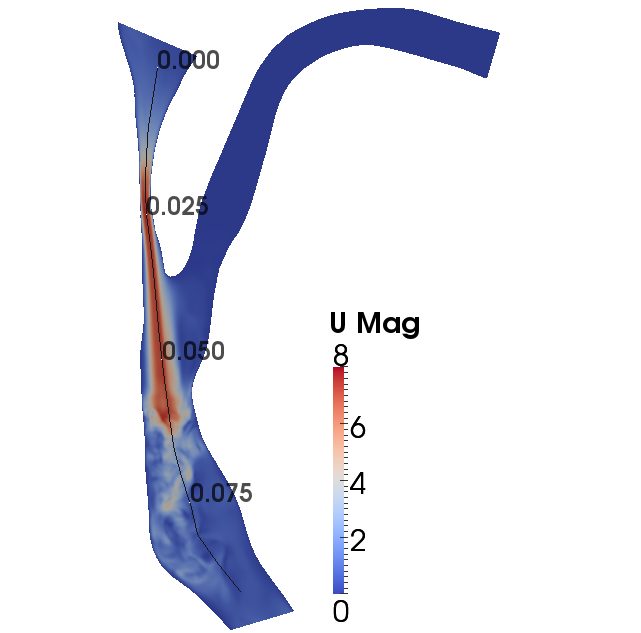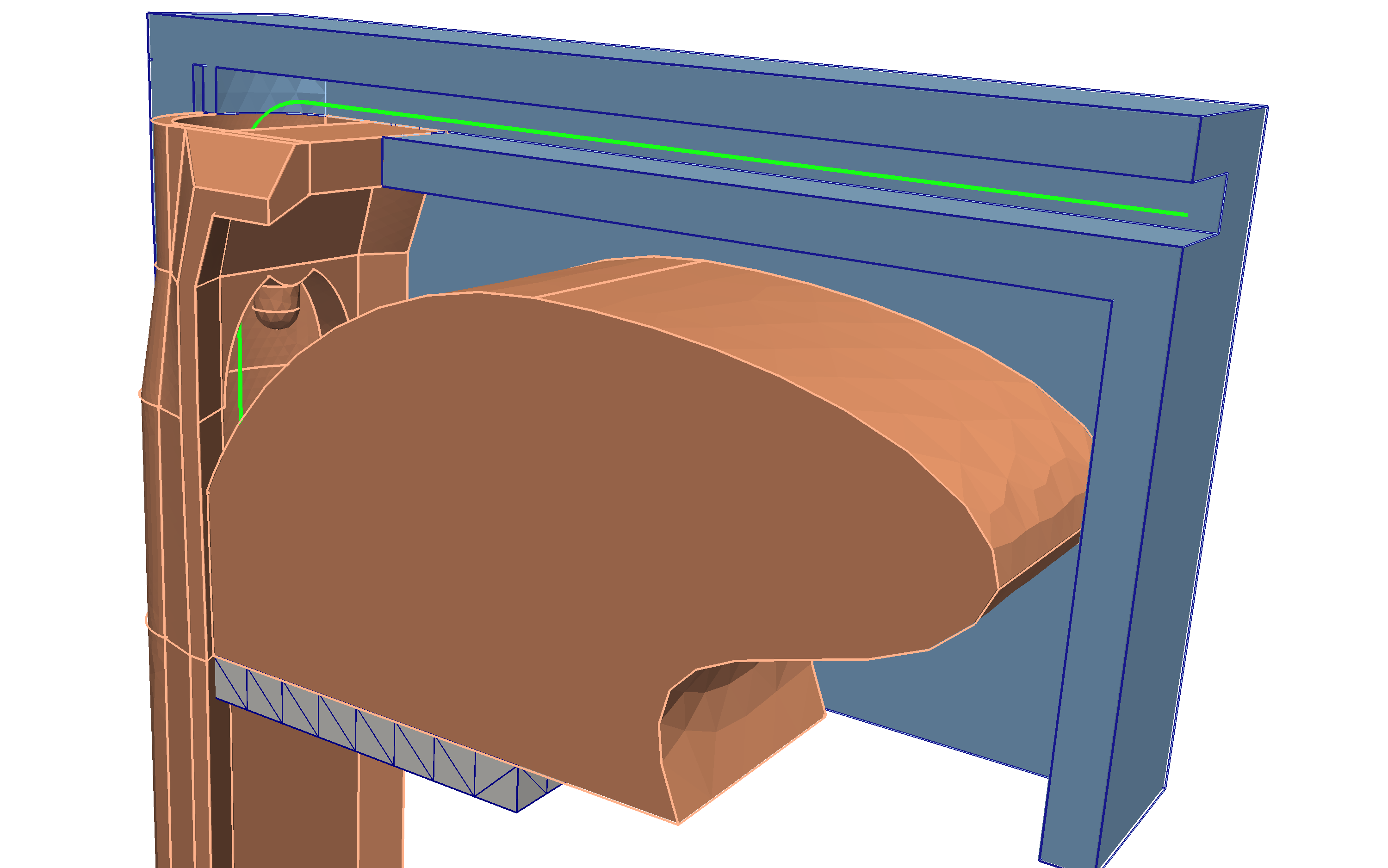|
|
||||||
| Menu | OPAL / OSAModelling | |||||
|
OPAL Home About People International Collaborators
Opportunities
Events
Related Links
|
Obstructive Sleep Apnea ResearchObstructive Sleep Apnea/Hypopnea (OSAH) is a common medical condition that causes excessive daytime sleepiness, impaired quality of life and increased cardiovascular morbidity. OSAH occurs because of recurrent episodes of partial or complete upper airway obstruction during sleep. Factors that predispose patients to develop OSAH are: a narrow upper airway, supine sleeping posture, and a loss of upper airway muscle tone (which occurs naturally during sleep, with aging, and with the use of drugs). For more information, please refer to our more detailed discussion about OSA or www.wikipedia.org's discussion of OSA. We are utilising ArtiSynth to explore the relationship between upper airway properties and upper airway collapse. Relevant upper airway properties include: airway size and shape, soft tissue properties, and airflow. This requires Fluid-Structure Interaction (FSI) simulations, to model the interaction of air flow with the upper airway. ArtiSynth enables creation of realistic biomechanical models of the upper airway along with efficient computation times to provide an interactive simulation environment in which we model changes in the upper airway during respiration. It also provides a model in which to examine the potential effects of a variety of treatments for OSAH that alter upper airway size, shape and collapsibility. Research DirectionsWe are researching OSAH using ArtiSynth on the following projects:
Fluid-Structure InteractionOSAH is fluid-structure interaction (FSI) problem. The interaction of air pressures in the upper airway with the surrounding upper airway structures may cause oscillation (in the case of snoring) or closure (in the case OSAH). Conversing, the positive air pressure produced by a CPAP (see about OSA) can maintain upper airway patency and is a common treatment method for OSAH. FSI simulation requires the coupling of fluid model with solid model. Artisynth is an ideal solid model for this problem, therefore, we design a 1D fluid model to couple with Artisynth to complete the FSI simulation, and we validate the simulations validity against experiments. Fast Fluid SimulationIt is very difficult to perform a 3D fluid simulation in the deforming and complex geometry of the upper airway, and the computational expense of 3D simulations is very large. These limitations are unacceptable for OSAH simulations where a vast number of parameters need to be investigated. Therefore, we explore the use of a 1D fluid model. The accuracy of the 1D fluid model can be assessed by comparing with a 3D fluid simulation (sample 3D results are shown below). What the 3D simulation required weeks to calculate, the 1D fluid simulation calculated in less than 1 second and the 1D fluid pressures are typically within 10% of the 3D centerline pressure, demonstrating that the 1D fluid model is very fast while maintaining the necessary accuracy. Details are given in publications, (1). FSI validationTo examine the validity of our FSI simulation, in which ArtiSynth is coupled with a 1D fluid model, we perform experiments in which air is driven below a flexible membrane. The flexible membrane has a stiffness that is similar to soft tissue and the airflow velocities are similar to those of breathing. The resulting FSI behavior is recorded with high speed video and pressure sensors located along the length of the channel. An example of the results observed are shown below. The simulation and experiment, at nearly the same inlet pressure, are quite similar in behavior.
More videos demonstrating the agreement between experiments and simulations can be found here. Parameterized Upper AirwayPerforming FSI simulations in upper airway geometries derived from medical images is important for patient-specific modeling; however, deriving these models is time-consuming and one cannot systematically control parameters. With the desire to investigate the sensitivity of upper airway parameters on airway collapse, we design a generic upper airway geometry (and mesh) with a simple set of parameters, such as airway cross-sectional area and shape, pharyngeal wall thickness, and soft palate thickness. Some benefits of this parameterized model are:
This parameterized upper airway model, coupled with our FSI simulation methods, replicates numerous behaviors observed in clinical OSAH literature, such as:
Patient-Specific ModellingOur research in imaging and model construction streamlines the process of creating patient-specific models. Our FSI simulation methods can be applied in a patient-specific model to understand the mechanisms of their OSAH and predict treatment outcomes. Related Publications
OpportunitiesPlease refer to the main Opportunities pages for available positions for Post-Doc & RA, graduate students and undergraduates The information on these pages should not be used for the diagnosis or treatment of any medical condition. Links to other sites are provided for information only and do not constitute endorsements of those other sites. |
|||||
| View Edit Attributes History Attach Print Search Page last modified on April 13, 2014, at 01:35 AM | ||||||

